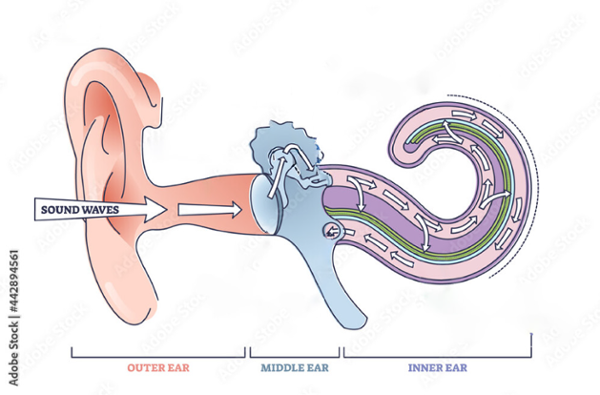What is hearing loss?
There are two types of hearing loss, sensorineural and conductive hearing loss. The type of hearing loss your baby has depends on where the problem is in the ear.
Diagram of the ear
There are different levels of hearing loss. These can be described as mild, moderate, severe and profound. Your audiologist will be able to explain which sounds your baby can hear and which sounds they have difficulty hearing. It is very unlikely that your baby will not be able to hear any sounds at all.
Sensorineural hearing loss
Sensorineural hearing loss (sometimes called nerve deafness) is a permanent hearing loss. This usually means that there is a problem in the part of the inner ear called the cochlea.
Most babies with a sensorineural hearing loss are born into families where no-one else is deaf, although in some families the hearing loss may be inherited. Sensorineural hearing loss may also be caused by infections during pregnancy, premature birth and complications at birth. It may be part of another condition or linked to other difficulties. Hearing loss can also develop through childhood illnesses, such as mumps, measles or meningitis.
Children with sensorineural hearing loss can also have a temporary conductive hearing loss.
Conductive hearing loss
Conductive hearing loss means that sound cannot pass through the outer and middle ear to the inner ear. Conductive hearing loss is usually temporary, but in a very small number of babies the hearing loss may be permanent.
Conductive hearing loss is commonly caused by fluid in the middle ear (known as glue ear). Less commonly, it may be caused by problems with the development of the outer and middle ear.
Click here for more information about the newborn hearing assessment.
